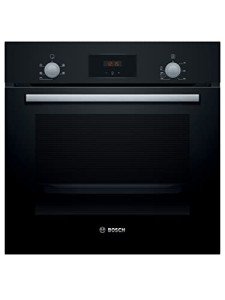Understanding Built-in Range Ovens: A Comprehensive Guide
Built-in range ovens have ended up being a staple in contemporary kitchen areas, using a seamless mix of performance and design. built in double gas oven and hob packages improve the visual appeal of any kitchen space however also enhance cooking efficiency. This short article will check out the numerous aspects of built-in range ovens, including their features, types, benefits, setup considerations, and maintenance suggestions.
What is a Built-in Range Oven?
A built-in range oven is a device that combines a stove and an oven into a single unit developed to be integrated into the kitchen cabinetry. Unlike standalone ovens, built-in varieties are produced to supply a more custom-made look and typically come with a range of functions that cater to both amateur cooks and experienced chefs. These systems can be powered by gas or electrical energy, with each type using different advantages.
Functions of Built-in Range Ovens
Built-in range ovens include a plethora of features that contribute to their appeal. A few of these consist of:
- Self-Cleaning Options: Many built-in ovens come geared up with self-cleaning cycles, making maintenance much easier.
- Smart Technology: Features like Wi-Fi connection and app-controlled cooking programs allow users to handle their ovens from their smart devices.
- Convection Cooking: Many built-in ovens have convection fans that flow hot air for consistent and even baking.
- Numerous Cooking Modes: Options such as steam cooking, broiling, and conventional baking offer adaptability in cooking methods.
Kinds Of Built-in Range Ovens
When it concerns built-in range ovens, there are two main types: gas and electric. Below is a comparison of their essential functions:
| Feature | Gas Range Oven | Electric Range Oven |
|---|---|---|
| Heating Method | Flames produced by burning gas | Electric heating components |
| Temperature level Control | Instantaneous heat control | Constant and stable heat |
| Installation | Needs gas line | Needs electrical outlet |
| Upkeep | Can be more challenging to tidy | Generally easier to clean |
| Cooktop Performance | High heat for quick searing | Even heating for baking |
Advantages of Built-in Range Ovens
Built-in range ovens use several benefits, making them a popular option for numerous homeowners. These advantages include:
- Space Efficiency: Built-in styles maximize counter space, making kitchen layouts more efficient.
- Aesthetic Appeal: They offer a customized, professional aim to the kitchen, integrating perfectly with cabinets and counter tops.
- Increased Property Value: High-quality built-in appliances can improve the worth of a home.
- Enhanced Cooking Experience: Features such as convection cooking and wise innovation make cooking more enjoyable and effective.
- Energy Efficiency: Modern built-in ovens typically use energy-saving innovations which minimize power intake.
Installation Considerations
Appropriate setup is crucial for built-in range ovens. Here are some crucial aspects to think about:
- Space Requirements: Measure the readily available space in the kitchen to make sure that the built-in oven fits flawlessly within cabinets.
- Electrical/Gas Connections: Ensure that the appropriate connections are available. For gas ovens, a gas line need to be available; for electric ovens, a dedicated circuit is required.
- Ventilation: Adequate ventilation is critical, particularly for gas designs, to avoid the accumulation of hazardous gases.
- Professional Installation: It is a good idea to have the oven set up by an expert to adhere to safety standards and producer guidelines.
Upkeep Tips
Preserving a built-in range oven is important for its durability and efficiency. Here are some tips to keep your device in top condition:
- Regular Cleaning: Clean spills and discolorations instantly to prevent them from ending up being tough-to-remove residues.
- Self-Clean Cycle: Utilize the self-clean feature regularly to keep the interior.
- Inspect Seals: Inspect door seals to guarantee they are airtight and change them if essential.
- Professional Servicing: Schedule regular maintenance consult certified technicians to ensure optimum efficiency.
Frequently asked questions
What sizes do built-in range ovens can be found in?
Built-in range ovens typically come in basic widths of 24, 30, and 36 inches. It is necessary to determine your kitchen space to pick the suitable size.
Are built-in range ovens more costly than freestanding models?
Yes, built-in range ovens tend to be more pricey due to their customized design and installation requirements. However, their benefits frequently justify the financial investment.
Can I install a built-in range oven myself?
While it is possible for skilled DIY-ers, it is generally advised to hire a professional for appropriate installation and safety compliance.
How do I choose between a gas and electric built-in range oven?
Selecting between gas and electric largely depends upon personal cooking choices and the existing infrastructure of your kitchen. Gas cooktops use immediate heat control, while electric cooktops provide even heating.
Are built-in range ovens energy-efficient?
Many modern-day built-in range ovens are created with energy-saving functions, making them efficient choices for the environmentally conscious customer.
Built-in range ovens provide a captivating blend of functionality, convenience, and design. Their ability to elegantly integrate within kitchen style makes them an attractive option for house owners wanting to boost their cooking experience. By comprehending their features, benefits, and maintenance needs, consumers can make informed choices when buying this essential kitchen home appliance. Planning for proper setup and regular maintenance will guarantee that your built-in range oven serves you well for several years to come.

